#USS JUNEAU (CL-52)
Explore tagged Tumblr posts
Text


"The five Sullivan Brothers aboard USS JUNEAU (CL-52), during her commissioning ceremonies at the Brooklyn Navy Yard, New York. All were killed in action aboard the ship the following the November 13, 1942 Naval Battle of Guadalcanal. Left to Right: Joseph, Francis, Albert, Madison, and George Sullivan."
Photographed on February 14, 1942.
U.S. Naval History and Heritage Command Photograph: 208-PU-19500-1, NH 52362
#USS JUNEAU (CL-52)#USS JUNEAU#Atlanta Class#Light Cruiser#Cruiser#Warship#Ship#United States Navy#U.S. Navy#US Navy#USN#Navy#World War II#World War 2#WWII#WW2#WWII History#History#Military History#February#1942#my post
110 notes
·
View notes
Text
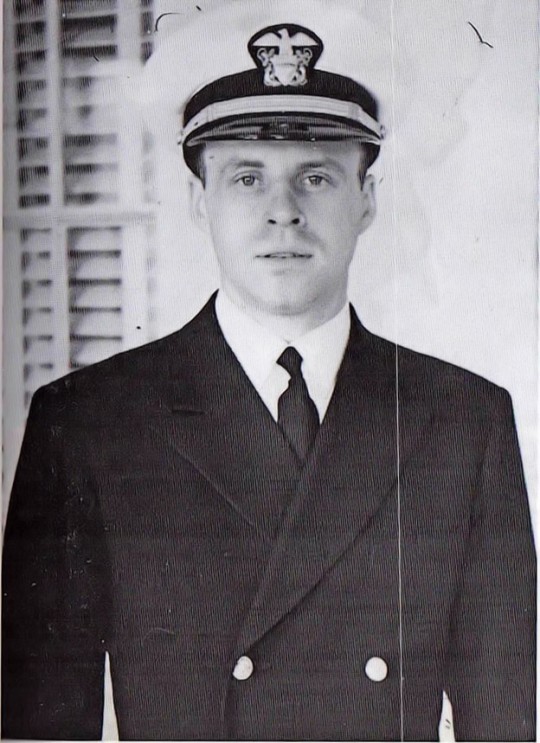

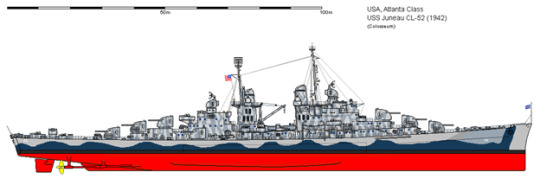
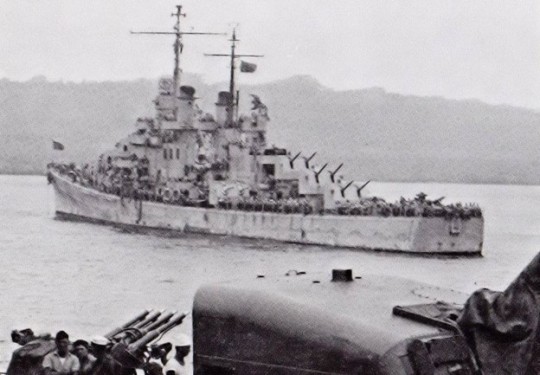
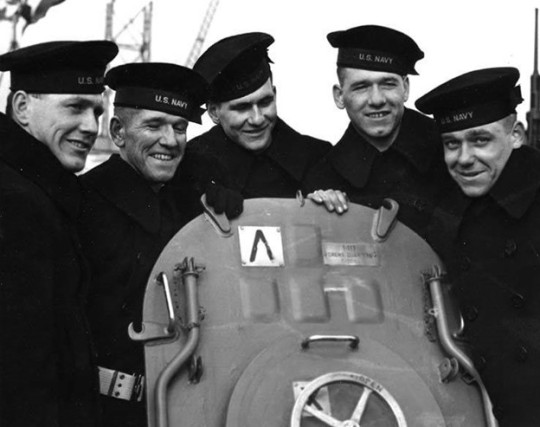
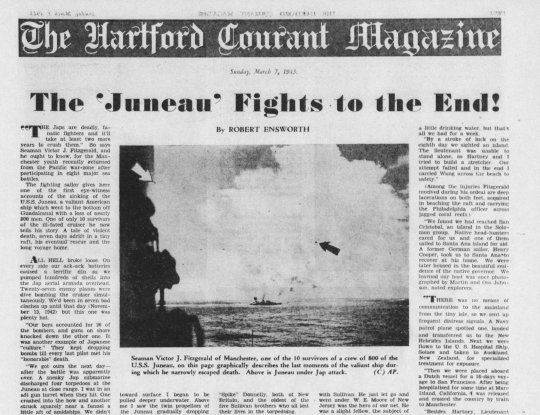
Abandoned
On January 31, 1943, Navy Lieutenant (LT) Charles Wang checked into the hospital at Mare Island Naval Shipyard. His journey to the hospital had been epic as he joined the flood of World War II casualties to be treated at the hospital since the Pearl Harbor casualties arrived on Christmas Day two years before. Lt. Wang’s stay in hospitals stretched out to two years and 30 operations as doctors struggled to repair the damage that a plummeting radar antenna and 6 days of exposure had done to his mangled leg. By all rights, Lieutenant Wang should have been dead, but luck and two sailors had collaborated to save his life.
In the pitch black of night on Friday the 13th of November 1942, Lt. Wang with two other officers, were in charge of Gun Control 2 and had survived unscathed an epic naval battle in Iron Bottom Sound off Guadalcanal. US forces had captured a Japanese airfield on the island of Guadalcanal and in a desperate gamble Japanese Admiral Yamato was throwing everything he had at the US troops to dislodge them. The Americans had broken the Japanese codes and knew that the Japanese were coming. Forty-eight ships, including battleships, heavy cruisers, light cruisers and destroyers were coming through a narrow feature known as the slot intent on pummeling the US troops on Guadalcanal and destroying any warships they might encounter.
Steaming towards the Japanese fleet was a much smaller US fleet that Admiral Bull Halsey had hastily assembled to counter the Japanese move. The US fleet was outgunned and consisted of only two heavy cruisers, two light cruisers and eight destroyers. As the two fleets approached each other the Japanese searchlights suddenly lit up at about two in the morning. All hell broke loose as both sides opened on the other. By morning the two fleets were limping apart. While the Japanese had suffered heavy losses they had scored a tactical victory. Only six ships of the American fleet had survived and except for one destroyer all the remaining ships were heavily damaged. Lt. Wang’s light cruiser the USS Juneau (CL-52) was struggling back to the US base at Espiritu Santo 600 miles away. Lt. Wang survived the battle with no injuries, but the same was not true for his ship and shipmates both of which had been decimated.
The Juneau was built to provide anti-aircraft fire to protect carriers and was never expected to slug it out in a surface engagement. Juneau was riddled with gunfire and a Japanese torpedo had struck her forward boiler room killing everyone in it. Her mess hall had been converted to a sick bay during the battle and suffered a direct hit that reduced it to twisted metal and body parts. Juneau was down at the bow as she limped along on one engine while being steered from a jury-rigged apparatus at the rudder post. As Lt. Wang gazed across the water to the heavy cruiser USS San Francisco (CA-38) he was looking at a similar mess. Her topsides had been struck numerous times leaving a jangle of twisted metal. Her crew had suffered hundreds of casualties, and her bridge was gone because of nearly the entire Japanese fleet focusing on her. Lt. Wang was not the only person looking at the San Francisco.
Staring through his periscope Commander Yokota of the Japanese submarine I-26 fired two torpedoes at the San Francisco. Those torpedoes missed their intended target streaking across her bow. One of the torpedoes found a different victim. Unseen until seconds before impact, that torpedo slammed into Juneau’s magazine. In a massive explosion the huge ship was blown in two and ceased to exist. As the hull sections slipped beneath the waves the ship's radar antenna came hurtling down and broke Lt. Wang’s right leg before he was dragged underwater. Lt. Wang survived the suction of the sinking and ended up on an improvised raft with about 140 survivors most of whom were also badly wounded.
As the men struggled to survive, they were stunned to see the entire fleet sail away. The fleet commander had reasoned that no one could have survived the massive explosion, and it was too dangerous to stay in the area with a Japanese submarine lurking. The men’s injuries, sharks, exposure and lack of fresh water now began whittling away at the survivors. Lt. Wang was in such bad shape that two men determined to set off with him in a raft to a nearby island to seek help. They reached the island 6 days after the sinking, dehydrated, sunburned and starving. Found by natives they were eventually rescued, and Lt. Wang was brought to Mare Island for treatment.
Lt. Wang and his companions were shocked to learn that of original 140 survivors, only 10 men were still alive. Included in the dead were the now famous five Sullivan brothers who had fought hard to serve together on the same ship despite Navy policy against such a practice. Lt. Wang’s war was over as his stay in hospitals stretched out for two years and 30 operations as doctors struggled to repair the damage that the plummeting radar antenna and 6 days of exposure had done to his mangled leg. He returned home to Philadelphia, married, and earned his medical degree, perhaps influenced by his experiences at the Mare Island hospital.
Dennis Kelly
#mare island#naval history#san francisco bay#us navy#vallejo#world war 2#world war ii#world war two#Sullivans#Sullivan brothers#Juneau#San Francisco#Wang#hospital#treatment#medicine#shark#survivor#cruiser#torpedoed#Guadalcanal#sunk#submarine
0 notes
Photo

Folks, I cannot possibly begin to fit what needs to be said about these five young men into this space here. PLEASE - go to out Facebook page - link in bio - and read the full article. In a nutshell, when we were researching our post on the sinking of the USS Juneau (CL-52) on November 13th off of San Cristobal during the Naval Battle Of Guadalcanal, we discovered something profound in what is already horrific tragedy. No less than 6 of the young men killed on that ship were from right here in Monmouth County, NJ. They are: 1) James A. Borden, age 21, from Freehold; born, October 5th, 1921; memorial is located in Old Tennent Church, Tennet, adjacent to Monmouth Battlefield. (Photos 1 and 2) 2) Francis E. Class Jr., age 20, from Belmar; born July 18th, 1922; memorial is located at Saint Catherine’s Cemetery, Sea Girt (Photos 3 and 4) 3) Alfred J. Ferruggiaro, age 25, from Belmar; born, 1916; memorial is located at Saint Catherine’s Cemetery, Sea Girt (Photos 5 and 6) 4) Charles S. Hayes, age 22, from Eatontown; born, 1920; Photos are sadly unavailable at this time; individual memorial unknown, but family is buried in Woodbine Cemetery, Oceanport 5) Joseph R. McConnell, age 19, from Belmar; born April 19th, 1922; memorial is located at Saint Catherine’s Cemetery, Sea Girt (Photos 7 and 8) 6) Robert E. Sherman, age 20, from Belmar; born, April 13th, 1923; memorial is located at Greenwood Cemetery, Brielle (Photos 9 and 10) The United States, for the most part, never saw combat during World War 2. That doesn't mean that it wasn't real to the 14 million families that sent sons and daughters to fight in it. For seven of those families and the communities around them, it was all very, very real. As telegrams from the Navy Department began to arrive across Monmouth County, there was still a U-Boat War going on, right off the beaches of Belmar. We cannot, and will not, allow our history and the legacy of our Veterans and their sacrifice to fade into history. And it's not going to happen on our watch. Please, again, head to Facebook to read the full article. (at Belmar, New Jersey) https://www.instagram.com/p/ClNRW_OtN8I/?igshid=NGJjMDIxMWI=
3 notes
·
View notes
Photo

The five Sullivan brothers, George, Francis, Joseph, Madison, and Albert aboard the Atlanta-class light cruiser USS Juneau (CL-52). Tragically, all five brothers were killed in action when their ship was hit by torpedoes and sank on November 13, 1943 [1078×899] Check this blog!
9 notes
·
View notes
Video
youtube
Sullivan - Caroline's Spine
The song tells the true story of five siblings, the Sullivan brothers from Waterloo, Iowa, who died aboard the USS Juneau in World War II. Lyrically, it focuses on Mrs. Sullivan's communication both with her sons and the military. Caroline's Spine singer and main songwriter Jimmy Newquist wrote the song after reading the war documentary Hollywood Goes to War. Regarding his inspiration, he remarked:
"Coming from a big family, the story of five brothers really struck home with me. I saw a news clipping with a photo of Mrs. Sullivan holding a banner with five gold stars- one for each of her dead sons. It's a really sad story with incredible loyalty and courage."
Newquist later noted, "The song was an act of love. . . I sleep well at night knowing that I brought attention to something that shouldn't be forgotten He has also regarded it among his top favorite Caroline's Spine songs ~ Source
The five Sullivan Brothers were lost when the ship to which all five were assigned, USS Juneau (CL-52) was sunk on 13 November 1942 during the Battle of Guadalcanal
Note from @soulless-blunder ~
My dad was former Navy. He proudly served for 8 years on a destroyer and kept much memorabilia during his tenure there, Dad was a bit old fashioned with his musical tastes but when it came to this song he enjoyed it very much. Usually a very stoic and quiet man this song made him emotional. He would sit quietly, head down, as the song carried on. After it ended he would be quiet for a bit before carrying on with his day. This one is for you dad. Miss you very much...

45 notes
·
View notes
Photo

”USS Juneau (CL-52) ready for launching, at the Federal Shipbuilding Company yard, Kearny, New Jersey, 25 October 1941.”
(NHHC: 19-N-28147)
#Military#History#USS Juneau#Light cruiser#United States Navy#US Navy#WWII#WW2#Pacific War#World War II
47 notes
·
View notes
Text

The five Sullivan Brothers were lost when the ship to which all five were assigned, USS Juneau (CL-52) was sunk on 13 November 1942 during the Battle of Guadalcanal. Many memorial efforts have honored the five brothers. Since their loss much confusion has resulted from the many myths surrounding both the Sullivan brothers and the Navy's policy regarding family members serving together at sea.
The Sullivan brothers had a navy ship named after them USS Ths Sullivan's and with recent wear and tear the boat is sinking in the Buffalo harbor to save the Sullivan's check out this link here
#history#vintage#the Sullivan's#Sullivan brothers#ww2#world war 2#navy#buffalo#buffalo new York#buffalo ny
1 note
·
View note
Text
January 3, 1942/January 3, 2000
“We would make a team together that cannot be beat”: The Fighting Sullivan brothers/ “We Stick Together”: The USS Sullivan
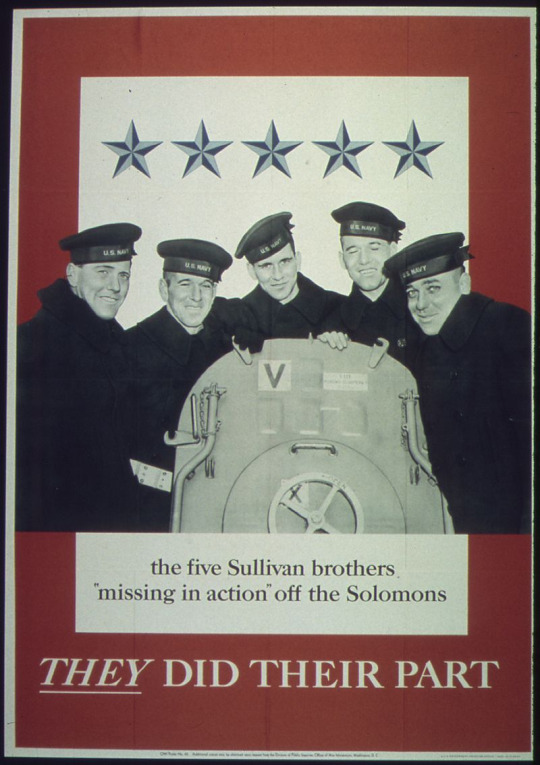
Okay, listen. I hadn’t ever intended to make one post on two things. These are stories that came my way a day late whoops and I was magnificently intrigued by the way life can kind of come full circle. This, from a girl who isn’t particularly interested in military history. Brace yourselves, this is a long one.
The Fighting Sullivan brothers were born and raised in Waterloo, Iowa. Their growing up seems to have been a little spotty, littered with absentee parenting and poverty. Their father, Tom, was said to have been an abusive alcoholic. Their mother, Alleta, suffered from what we can only assume was depression, taking to her bed for days at a time. This resulted in unruly little boys, who left school around age 16 or so and who also seemed to exist solely as trouble-makers and bad influences. The Sullivan family lived just a stone’s throw from the black neighborhood; while most of the white working-class folks of Waterloo avoided the neighborhood, the Sullivan boys are reported to have spent time lurking in the alleys of the black neighborhood where they “stirred the shit,” initiating fights with their black neighbors. They were all also reportedly members of a local motorcycle club, a large group of men parading around in what equated to soldiers’ uniforms (of Italian Fascist design, no less) and causing a general ruckus to the neighborhood.
By the time of the Japanese attack on Pearl Harbor, two of the Sullivan brothers had already served time with the Navy: oldest brothers George and Frank enlisted in 1937 and served together for four years before returning home in May of 1941. After the Pearl Harbor attack on December 7, 1941, all five brothers -- including the youngest, Al, who had married at 17 and already had a 21-month-old son -- decided to enlist. George wrote to the Department of the Navy, explaining that they had friends killed in the attack at Pearl Harbor, and all but begging that he, his four brothers, and two friends from the motorcycle club be allowed to serve together. The Navy didn’t directly encourage family members to serve together, but they also didn’t actively discourage it, so after passing their physicals, they were all assigned to the light cruiser, USS Juneau. The Sullivan brothers became local and national heroes.
The USS Juneau participated in several naval engagements during the extensive Guadalcanal Campaign that began in August 1942. But, on November 13, 1942, the Juneau was hit by a Japanese torpedo and forced to withdraw from the fighting. Juneau and two other cruisers -- the Helena and the San Francisco, also damaged from the fight -- were heading to the US Naval base at Espiritu Santo for repairs when the Japanese submarine I-26 launched two more torpedoes. They were intended for the severely damaged San Francisco, missed, one hitting Juneau in the same place as the previous hit. There was a great explosion, the Juneau broke in two and, in twenty seconds, the entire ship was gone. Fearing more attacks, the Helena and the San Francisco continued to Espiritu Santo without attempting to rescue any survivors. One hundred men survived the sinking, including two fo the Sullivan brothers, left to fend for themselves for eight days until rescue aircraft arrived; of those one hundred, only ten were lost to shark attacks and the elements, including the two remaining Sullivan brothers.
The Sullivan family became almost like a mascot for the US Navy after the attack. The parents toured the country at the behest of the Navy, stopping at war bond rallies and production plants to promote pro-military sentiments and move the workers into enlisting. On February 22, 1943, Alleta Sullivan even christened a new Navy ship, the USS Tawasa, and the again, less than two months later, when the Navy commissioned the new destroyer The Sullivans. This version of The Sullivans remained in active duty until it was decommissioned on January 7, 1965. The second destroyer The Sullivans was commissioned by the Navy on April 19, 1997. It’s the second destroyer that sort of brings the story of the Fighting Sullivans full circle. And, I promise, this bit is a quick one. In October 2000, the USS Cole was attacked by suicide bombers while she sat in port in Aden, Yemen. The FBI launched an investigation into the bombing with the Yemeni government; the Yemeni government confirmed the Cole had been the target of a terrorist plot. Yemeni officials arrest two suspects in the bombing and, while in custody, one of the suspects explains that there had been another attempt to attack an American warship in January 2000. One official thought the report was bogus, but the suspect gave so much credible information into the attack of the Cole that they felt it must be true. The suspect claimed the first attack had been planned for January 3, 2000, but that it had been aborted. Why? Because the boat used by the attackers was overloaded with ammunition and began to sank before hitting its desired target. And the target? Supposedly the United States destroyer ship The Sullivans, ported in Aden, Yemen for refueling.
Sources:
https://en.wikipedia.org/wiki/Sullivan_brothers
https://en.wikipedia.org/wiki/USS_Juneau_(CL-52)
https://en.wikipedia.org/wiki/USS_The_Sullivans_(DD-537)
https://www.navytimes.com/veterans/2019/11/10/the-deaths-of-these-5-sailors-changed-how-us-manned-military-units/
https://www.cnn.com/2013/09/18/world/meast/uss-cole-bombing-fast-facts/index.html
https://en.wikipedia.org/wiki/USS_The_Sullivans_(DDG-68)
https://www.nytimes.com/2000/11/10/world/failed-plan-to-bomb-a-us-ship-is-reported.html
Additional Reading:
If you're militarily inclined, the United States Navy has an entire website called Naval History and Heritage Command. On it is a section devoted to Disasters and Phenomena with an entire area of interesting information devoted to the Sullivan brothers. You can read it here.
On March 17, 2018, the expedition crew of Research Vessel (R/V) Petrel found the remains of the wreckage of the USS Juneau! You can read about that here and here.
1 note
·
View note
Text

USS JUNEAU (CL-52) underway.
Note: photograph heavily retouched by censor.
Photographed in February 1942.
U.S. Naval History and Heritage Command: NH 52361
#USS JUNEAU (CL-52)#USS JUNEAU#Alanta Class#Light Cruiser#Cruiser#Warship#Ship#United States Navy#U.S. Navy#US Navy#USN#Navy#World War II#World War 2#WWII#WW2#WWII History#History#Military History#February#1942#my post
21 notes
·
View notes
Photo



The first USS Juneau (CL-52) was a United States Navy Atlanta-class light cruiser sunk at the Naval Battle of Guadalcanal 13 November 1942. In total 687 men, including the five Sullivan brothers, were killed in action as a result of its sinking. She was laid down by Federal Shipbuilding Company, Kearny, New Jersey, on 27 May 1940, launched on 25 October 1941, sponsored by Mrs. Harry I. Lucas, wife of the mayor of the city of Juneau, Alaska, and commissioned on 14 February 1942, Captain Lyman K. Swenson in command.[4] On 17 March 2018, the wreck of Juneau was located by Paul Allen's research crew onboard the RV Petrel.
https://en.wikipedia.org/wiki/USS_Juneau_(CL-52)
0 notes
Photo

(The far-more detailed version of this is on our FB page) “A Rotten Day – The USS Juneau” 80 Years Ago, Today - (Fri) Nov 13th, 1942, the Solomon Islands: Half a world away from the Battle of The Atlantic, the Naval Battle of Guadalcanal was unfolding the way a train wreck does: carnage, death, disaster, and no idea when the hell it would stop. Since August, US troops have been holding onto Guadalcanal by their fingernails; a massive battle is underway to take the island. In the melee is the USS Juneau (CL-52), an Atlanta-Class light cruiser of the US Navy, which was built in Kearny, New Jersey. (Pics 1-2) Onboard are the Five Sullivan Brothers, seen in Pic 3. Left to Right, they are: Joseph, Francis, Albert, Madison, and George. They are something of folk heroes in early-war America as we rush to fight back against the Axis tidal wave. Onboard is another set of siblings, the Rogers Brothers (Pic 4) From left to right: Joseph, Patrick, Louis, and James. All 9 boys have been aboard her since she was commissioned in early 1942. However, for the Rogers, Joseph and Jimmy opt to transfer to a supply ship in October; Patrick and Louis remain onboard. The 5 Sullivan brothers, inseparable, remain together on Juneau as well. Life expectancies in the combat zone aren’t very high for men; if youve followed this page for more than 5 minutes, the same applies to ships, as well. Juneau already badly damaged, has a list from a giant hole blown in her from a Japanese torpedo. Tragedy predictably strikes when the Japanese submarine “I-26” (Pic 5), hits her with one torpedo. It strikes the impact zone of the previous hit, allowing it to shoot straight into her; she goes up like a volcano. Her 540-foot long hull snaps in half like a twig and she is gone in 20 seconds. Over 100 Officers and Men bob to the surface, left to their fate. They will die of wounds, drown, bake in the tropic heat, and are eaten by sharks for no less than 8 days. By the time rescue arrives, there are only 10men left alive, from the ship’s compliment of 697 Officers and Men… The 2 Rogers Boys, 5 Sullivan Brothers - and 6 kids from Monmouth County -. aren't among them. Just another day... (at Fort Hancock, New Jersey) https://www.instagram.com/p/Ck7OcYnNQT3/?igshid=NGJjMDIxMWI=
1 note
·
View note
Photo

Light cruiser USS Juneau (CL-52) at New York Navy Yard. via David Arkwright 1 - Google+ Public Posts
0 notes
Photo

“USS Juneau (CL-52) under construction at Kearny, New Jersey, 1 September 1941. USS Atlanta (CL-51) is in the background.”
(NHHC: 19-N-28140)
#Military#History#USS Juneau#Light cruiser#USS Atlanta#United States Navy#US Navy#WWII#WW2#Pacific War#World War II
23 notes
·
View notes
Text
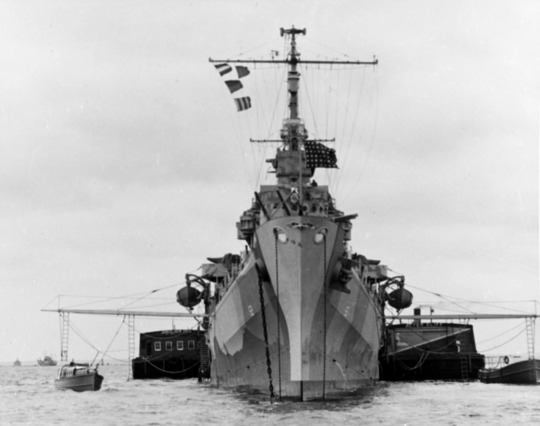
USS JUNEAU (CL-52) off New York City.
Date: June 1, 1942
U.S. Naval History and Heritage Command: 19-N-31267
#USS Juneau (CL-52)#USS Juneau#Atlanta Class#Light Cruiser#Cruiser#wassup#ship#June#1942#World War II#World War 2#WWII#WW2#United States Navy#U.S. Navy#US Navy#USN#Navy#New York City#New York#East Coast#my post
15 notes
·
View notes
Text
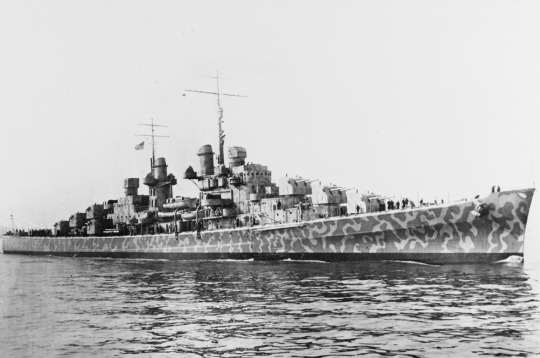
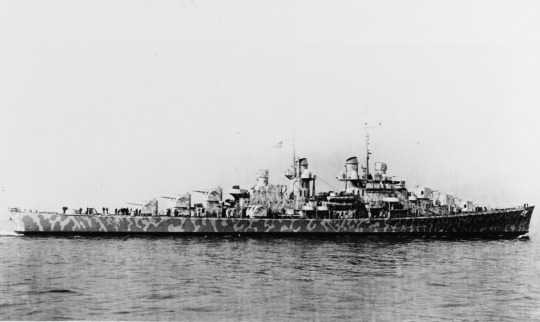
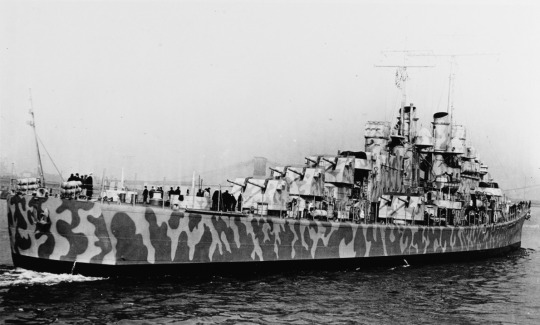
USS JUNEAU (CL-52) in New York Harbor.
Photographed on February 11, 1942.
U.S. Naval History and Heritage Command: 19-N-28143, 19-N-28145, 19-N-28144
#USS Juneau (CL-52)#USS Juneau#Atlanta Class#light cruiser#cruiser#February#warship#ship#1942#New York City#New York#East coast#united states navy#us navy#navy#usn#u.s. navy#world war 2#world war ii#WWII#WW2#my post#History
66 notes
·
View notes